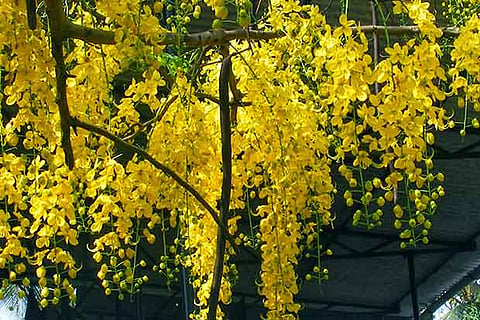

Chennai
The Tamil Puthandu begins in the month of Chithirai. This is named Hevilambi. As the first thing in the morning, Tamilians look at auspicious things such as gold and new clothes and rice in a mirror as this ritual is symbolic of good fortune. They decorate the house entrance with mango leaves and garland the doorways with flowers apart from drawing an elaborate rangoli. Donning new clothes, family members pray together after lighting the traditional kuthuvilakku.
This is followed by a ‘Puthandu’ a pachadi, which is a mixture of jaggery, chilly, salt, neem leaf or flowers and tamarind. “This mixing of flavours is to give us a taste of the different kinds of experiences we will undergo in life,” said Jayam, a retired Tamil professor. “Tamil months of Chithirai and Vaikasi are the months when trees and plants flower. We have jasmine, neem and mango flowering extensively only during these months. So, this period is called ‘Vasantha Kaalam’. These months are followed by months when trees bear fruits,” she noted.
In Kerala, Vishu, which means equal, is a very solemn festival celebrated with the family members. The most important aspect of the festival is the Vishukani. The belief is that one’s year will be prosperous by viewing auspicious things, Malayalees spread on a tray, items such as rice, lemon, golden cucumber, coconut, konna flowers, coins, jewellery and a nilavilakku (traditional lamp) in front of a mirror next to a figurine of Lord Krishna as part of Vishukani the previous night.
According to custom, the setting should be the first thing to be viewed on the day of Vishu. So, the eldest person of the house gets up at dawn and lights the nilavilakku. He/she then goes to each member of the family one by one, blindfolds them with her hand and guides them towards the setting. He/ she then asks them to view it. Family members wear the Vishukodi (traditional and brand new Kerala clothing). The elders give money (kani kash) to the younger ones in the family. This ritual is called Vishukaineetam. “This is the best part of the festival and we also demand a currency note along with it,” said 22-year-old Sri Chithra, who works as an engineer in a private firm.
“It was just a 25 paise coin decades ago,” said 56-year-old Hari. He went on to talk about the significance of the festival in Kerala. “When I was just nine years old, I had seen light rainfall around the time. There used to be hailstorms too at times. This used to be a regular feature till I was 15. Farmers used to till the land and keep it ready for the showers to sow the grains that used to be kept in the Vishukani,” said Hari.
The Vishu Sadya is enjoyed by the entire family. It is an elaborate meal with Vishukkatta (a gruel made of rice, coconut milk and spices, served with jaggery). For the bitter taste, they prepare the Veppampoorasam and for the sour taste there is always the Mampazhappulissery, pappadam and Ada Pradaman (payasam).
Visit news.dtnext.in to explore our interactive epaper!
Download the DT Next app for more exciting features!
Click here for iOS
Click here for Android